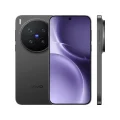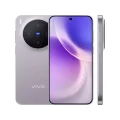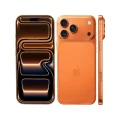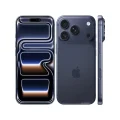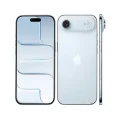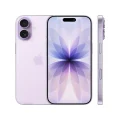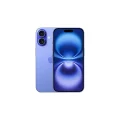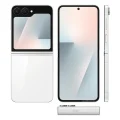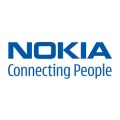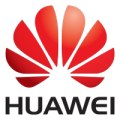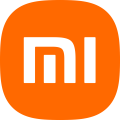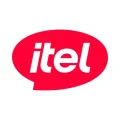- Home
- All Products
- Google Pixel
- Google Pixel 9a
Google Pixel 9a
-
Battery: 5100 mAh
-
RAM: 8GB, 8GB
-
Storage: 128GB, 256GB
-
Display: P-OLED, 6.3 inches
-
Camera: Rear 48 MP+13 MP, and Front 13 MP
-
OS: Android 15, up to 7 major Android upgrades
Full Specifications
Price
| Official | 59999 BDT 8GB/256GB Approx. |
General
| Model | Google Pixel 9a |
| Announced | 2025, March 19 |
| Released | 2025, April 10 |
| Status | Available |
Design
| Dimensions | 154.7 x 73.3 x 8.9 mm (6.09 x 2.89 x 0.35 in) |
| Weight | 186 g (6.56 oz) |
| SIM SIM (Subscriber Identity Module) is a small card that contains mobile network subscriber's account information. This allows the phone using the card to attach to a mobile network. The SIM card is most commonly associated with GSM and UMTS mobile networks. Moving a SIM card from one phone to another allows a subscriber to switch mobile phones without having to contact their mobile network carrier. SIM cards can also be used by a phone to store limited amounts of data, such as phone numbers and text messages. |
Nano-SIM + eSIM |
| Colors |
Obsidian, Porcelain, Iris, Peony |
Display Specification
| Display Type Display Technology => A number of display technologies and types used in mobile phones => TFT (Thin Film Transistor), IPS (In-Place Switching), OLED (Organic Light Emitting Diode), AMOLED (Active-Matrix Organic Light-Emitting Diode), Super AMOLED (an even advanced version of AMOLED), Resistive Touchscreen (Resistive touchscreens contain two layer of conductive material with a very small gap between them which acts as a resistance), Capacitive Touchsceen (Capacitive touchscreen technology consists of a layer of glass coated with a transparent conductor) | P-OLED |
| Size | 6.3 inches, 94.7 cm2 |
| Resolution | 1080 x 2424 pixels, 20:9 ratio |
| Refresh Rate | 120Hz |
| Pixel Density Pixel Density (PPI) is refers to the concentration of pixels on a particular display, measured in pixels per inch (ppi). Pixel density is calculated by dividing the diagonal pixel resolution of a display by its diagonal size, higher pixel density better display quality. | 422 ppi density |
| Display Protection Display Protection => Gorilla Glass is a special alkali-aluminosilicate glass shield with exceptional damage resistance that helps protect mobile displays from scratches, drops, and bumps of everyday use, It is always better to go for a smartphone with Gorilla Glass for that added protection and peace of mind. | Corning Gorilla Glass 3, Mohs level 4 |
| Features |
1800 nits (HBM), 2700 nits (peak) 83.5% screen-to-body ratio |
Platform
| Operating System OS => Every computer system run on a base software called Operating System (OS). Operating System controls all basic operations of the computer (such as smartphone, PDAs, tablet computers and other handheld devices). The Operating System allows the user to install and run third party applications (apps), apps are used to add new functionality to the device. | Android 15, up to 7 major Android upgrades |
| Chipset Chipset is a group of integrated circuits designed to perform one or a more dedicated functions, often with real time computing constraints, Popular smartphones are equipped with more advanced embedded chipsets that can do many different tasks depending on their programming. | Google Tensor G4 (4 nm) |
| CPU CPU (Central Processing Unit) mostly known as processors, CPU processes instructions in order to carry out certain functions that make your device operate properly. Processors are often described as the brain of computers, smartphones and tablets, Smartphones and tablets rely on processors to carry out their every task, Processors are an incredibly important factor in selecting any type of computing device, including your smartphone. | Octa-core (1x3.1 GHz Cortex-X4 & 3x2.6 GHz Cortex-A720 & 4x1.9 GHz Cortex-A520) |
| GPU GPU (Graphics Processing Unit) is a single-chip processor designed to rapidly manipulate and alter memory to accelerate the creation of images in a frame buffer intended for output to a display, This includes things such as lighting effects, object transformations, and 3D motion. | Mali-G715 MP7 |
Main Camera
| Camera Setup | Dual |
| Resolution |
48 MP, f/1.7, 25mm (wide), 1/2.0", 0.8µm, dual pixel PDAF, OIS 13 MP, f/2.2, 120˚ (ultrawide), 1/3.1", 1.12µm |
| Features |
Dual-LED flash, Pixel Shift, Ultra HDR, panorama, Best Take |
| Video | 4K@30/60fps, 1080p@30/60/120/240fps, gyro-EIS, OIS |
Selfie Camera
| Camera Setup | Single |
| Resolution |
13 MP, f/2.2, 20mm (ultrawide), 1/3.1", 1.12µm |
| Video | 4K@30fps, 1080p@30fps |
| Features |
HDR, panorama |
Network & Connectivity
| Technology | GSM / HSPA / LTE / 5G |
| Speed | HSPA, LTE (CA), 5G |
| Wi-fi Wi-Fi is a popular wireless networking technology using radio waves to provide high-speed network connections that allows devices to communicate without cords or cables, Wi-Fi is increasingly becoming the preferred mode of internet connectivity all over the world. | Wi-Fi 802.11 a/b/g/n/ac/6e, dual/tri-band (market/region dependent) |
| Bluetooth Bluetooth is a wireless communications technology for exchanging data between mobile phones, headsets, computers and other network devices over short distances without wires, Bluetooth technology was primarily designed to support simple wireless networking of personal consumer devices. | 5.3, A2DP, LE |
| NFC NFC (Near field communication) is a set of standards for smartphones and similar devices to establish peer-to-peer radio communications with each other by touching them together or bringing them into proximity, usually no more than a few inches. | Yes |
| Positioning |
GPS (L1+L5), GLONASS, GALILEO, BDS, QZSS, NavIC |
| FM Radio | No |
| USB | USB Type-C 3.2 |
| 2G Network |
GSM 850 / 900 / 1800 / 1900 |
| 3G Network |
HSDPA 800 / 850 / 900 / 1700(AWS) / 1900 / 2100 |
| 4G Network |
1, 2, 3, 4, 5, 7, 8, 12, 14, 17, 18, 19, 20, 21, 26, 28, 32, 38, 39, 40, 41, 42, 66, 75 - International 1, 2, 3, 4, 5, 7, 8, 12, 13, 14, 17, 20, 25, 26, 28, 29, 30, 38, 41, 48, 66, 71 - USA |
| 5G Network |
1, 2, 3, 5, 7, 8, 12, 20, 26, 28, 38, 40, 41, 66, 75, 77, 78, 79 SA/NSA/Sub6 - International 1, 2, 3, 5, 7, 8, 12, 14, 20, 25, 26, 28, 29, 30, 38, 41, 48, 66, 70, 71, 77, 78 SA/NSA/Sub6 - USA |
Battery
| Battery Type Battery Type => Cell phones run on various kinds of batteries depending on the manufacturer, phone size or shape and features. There are basically four types of cell phone batteries => Lithium Polymer, Lithium Ion, Nickel Metal Hydride and Nickel Cadmium. | Li-Poly (Lithium Polymer) |
| Capacity Battery Capacity is a measure (typically in Amp-hr) of the charge stored by the battery, and is determined by the mass of active material contained in the battery. The battery capacity represents the maximum amount of energy that can be extracted from the battery under certain conditions. | 5100 mAh |
| Removable | No |
| Charging |
23W wired, PD3.0 7.5W wireless Bypass charging |
| Wireless Charging Wireless Charging (Inductive Charging) uses an electromagnetic field to transfer energy between two objects. This is usually done with a charging station. Energy is sent through an inductive coupling to an electrical device, which can then use that energy to charge batteries or run the device. | Yes |
Multimedia
| Loudspeaker | Yes, with stereo speakers |
| Audio Jack | No |
Storage
| Card Slot Memory Card Slot is a special slot for inserting a memory card. Memory cards allow you to expand the phone's built-in memory, A memory card (sometimes called a flash memory card or a storage card) is a small storage medium used to store data such as text, pictures, audio, and video, for use on small, portable or remote computing devices such as mobile phones, mp3 players, digital cameras. | No |
| Internal Storage Internal Storage is a data storage space (flash memory) mostly used in smartphones, tablets and other electronic devices where operating system, apps, music, photos, videos, files and other user data Is stored. |
128GB 8GB RAM, 256GB 8GB RAM UFS 3.1 |
Sensors
| Fingerprint | Yes (under display, optical) |
| Other Sensors | accelerometer, gyro, proximity, compass, barometer, Circle to Search |
PROS
- Stunning display: brighter and larger than its predecessor
- Long battery life with adaptive optimization and fast charging
- Solid software longevity with seven years of updates, unheard-of in mid-rangers
- Built-in Gemini AI brings smart assistance and powerful editing tools
- Durable, sustainable build with IP68 rating and recycled materials
CONS
- No optical zoom lens (only ultrawide and digital zoom up to 8×)
- Bezels are somewhat thicker compared to premium phones; users note that they stand out
- Macro focus and AI features are great, but some advanced AI tools may be scaled down versus the full Pixel 9
- Plastic back (though durable and eco-friendly) might feel less premium
About the Google Pixel 9a
The Google Pixel 9a represents Google’s latest addition to their budget-friendly A-series lineup, officially announced on March 19, 2025, and released on April 10, 2025. This device continues Google’s tradition of bringing premium smartphone experiences to a more affordable price point, maintaining the same $499 price as its predecessor.
The Pixel 9a features several notable upgrades compared to previous A-series models. It sports a 6.3-inch display powered by Google’s Tensor G4 chipset, includes 8GB of RAM and 256GB of storage, and houses a substantial 5100mAh battery. The display represents a significant improvement, as it’s 35% brighter than the Pixel 8a at 2700 nits and includes a 120Hz adaptive refresh rate for smoother performance. The design has also been refreshed with a sleek, flat profile and rounded edges.
What makes the Pixel 9a particularly appealing is its integration of Google’s AI capabilities at this price point. The device comes with advanced Google AI features that were previously reserved for higher-end models, making sophisticated AI-powered photography and software experiences accessible to more users. The phone is available in three color options: Obsidian, Porcelain, and Iris, and like other Pixel devices, it receives regular security updates and is eligible for the latest Android beta programs, including Android 16.
Main Key Features
- Display: 6.3″ pOLED, FHD+ resolution (1080×2424 px), 20:9 aspect ratio, adaptive Smooth Display (60–120 Hz), Gorilla Glass 3, HDR support, up to 2700 nits peak brightness
- Performance: Powered by Google’s Tensor G4 processor, paired with 8 GB LPDDR5X RAM and 128 GB or 256 GB UFS 3.1 storage
- Battery & Charging: 5100 mAh battery offering 30+ hours of life (up to 100 hours with Extreme Battery Saver), supporting 23W wired fast charging and Qi wireless charging
- Cameras: Rear: 48 MP Quad-PD wide (f/1.7, OIS + EIS, 82° FoV) and 13 MP ultrawide (f/2.2, 120°) with Super Res Zoom up to 8×. Front: 13 MP (f/2.2, ~96° FoV). Camera software: Night Sight, Astrophotography, Macro Focus, Real Tone, Face Unblur, Portrait Light, Best Take, Magic Eraser, and more.
- Design & Durability: Composite matte back, satin metal frame, IP68 water and dust resistance, made with significant recycled materials (recycled aluminum, plastic, and plastic-free packaging)
- Software & Security: Ships with Android 15 and includes Gemini AI assistant/Nano, plus seven years of OS, security, and feature updates. Equipped with Titan M2 security chip, end-to-end protection, VPN by Google, spam/malware defense
- Extras: Pixel Call Assist (spam filtering, Hold for Me, clear calling), sustainable packaging, and value add-ons like Google Wallet for kids.
Why Choose the Pixel 9a?
- Longevity: Seven years of support means the phone stays relevant longer.
- Software finesse: Gemini and Pixel imaging tools elevate the experience.
- Photography versatility: Macro, ultrawide, and powerful post-capture editing.
- Eco-conscious design: Recycled materials and solid protection.
Opinion
The Pixel 9a impresses as a thoughtful blend of practicality and innovation. You get display and camera quality that rivals mid-tier flags. Plus, built-in AI, extensive update support, and attention to sustainability make it a standout. Sure, it doesn’t have optical zoom or ultra-slim bezels—but for real-world use, it offers stellar performance, battery efficiency, and longevity that most competitors can’t match.
See Another Model:
FAQs about Google Pixel 9a
Q: What are the key specifications of the Pixel 9a?
A: The Pixel 9a features a 6.3-inch display with a 120Hz adaptive refresh rate, Google’s Tensor G4 chipset, 8GB of RAM, 256GB of storage, and a 5100mAh battery. It includes a dual rear camera system with a 48 MP wide and 13 MP ultrawide lens, plus Super Res Zoom up to 8x.
Q: What colors are available for the Pixel 9a?
A: The Pixel 9a comes in Obsidian, Porcelain, Peony, and Iris, offering users multiple aesthetic options to suit their preferences.
Q: What AI features does the Pixel 9a include?
A: The Pixel 9a includes Pixel Call Assist, an AI-powered feature that screens unwanted calls, along with other Google AI capabilities that were previously reserved for higher-end models.
Q: Is the Pixel 9a durable and water-resistant?
A: Yes, the Pixel 9a comes with enhanced drop protection and water resistance, designed to handle life’s little “oops!” moments.
Give Your Review
Disclaimer Note
You can write your own disclaimer from APS Settings -> General -> Disclaimer Note.
